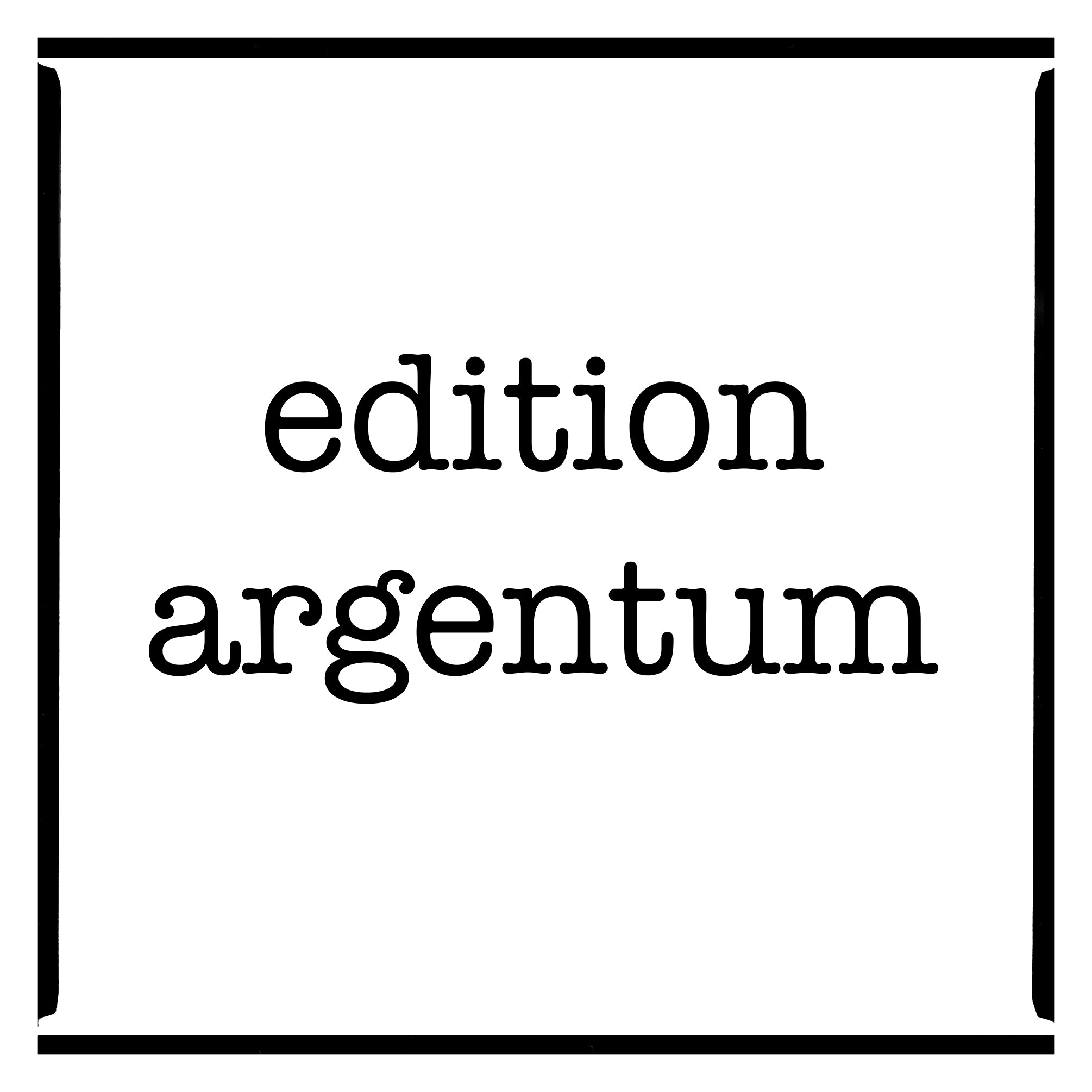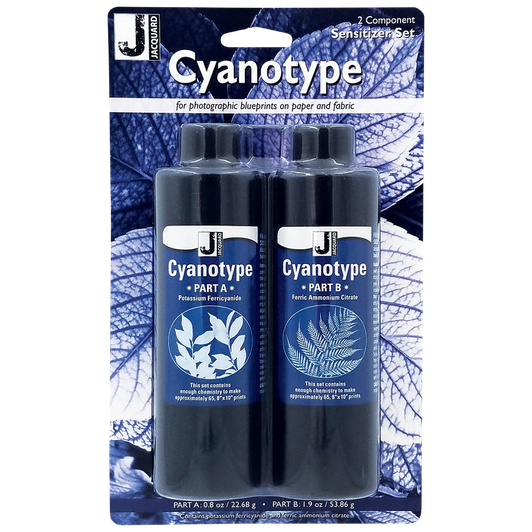
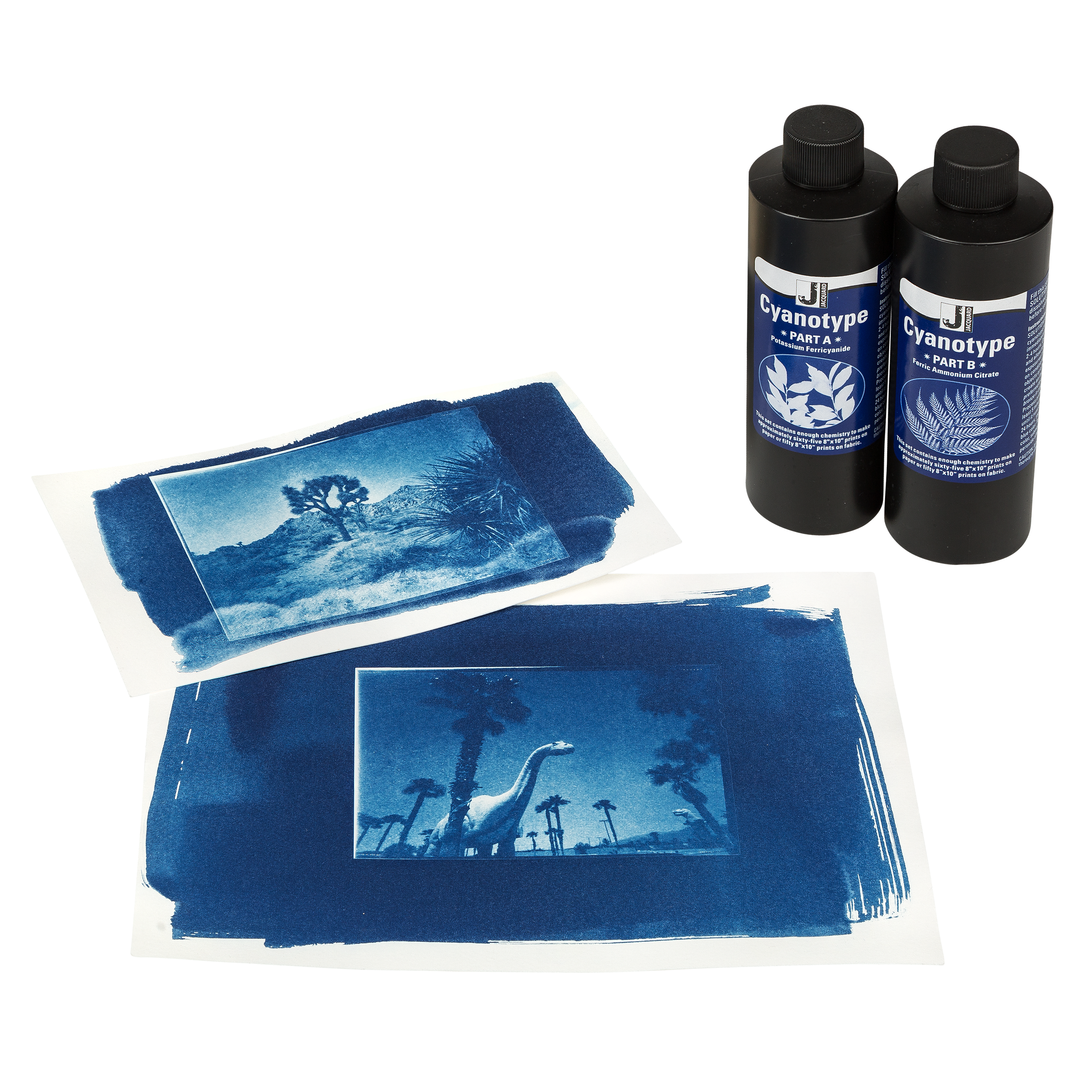
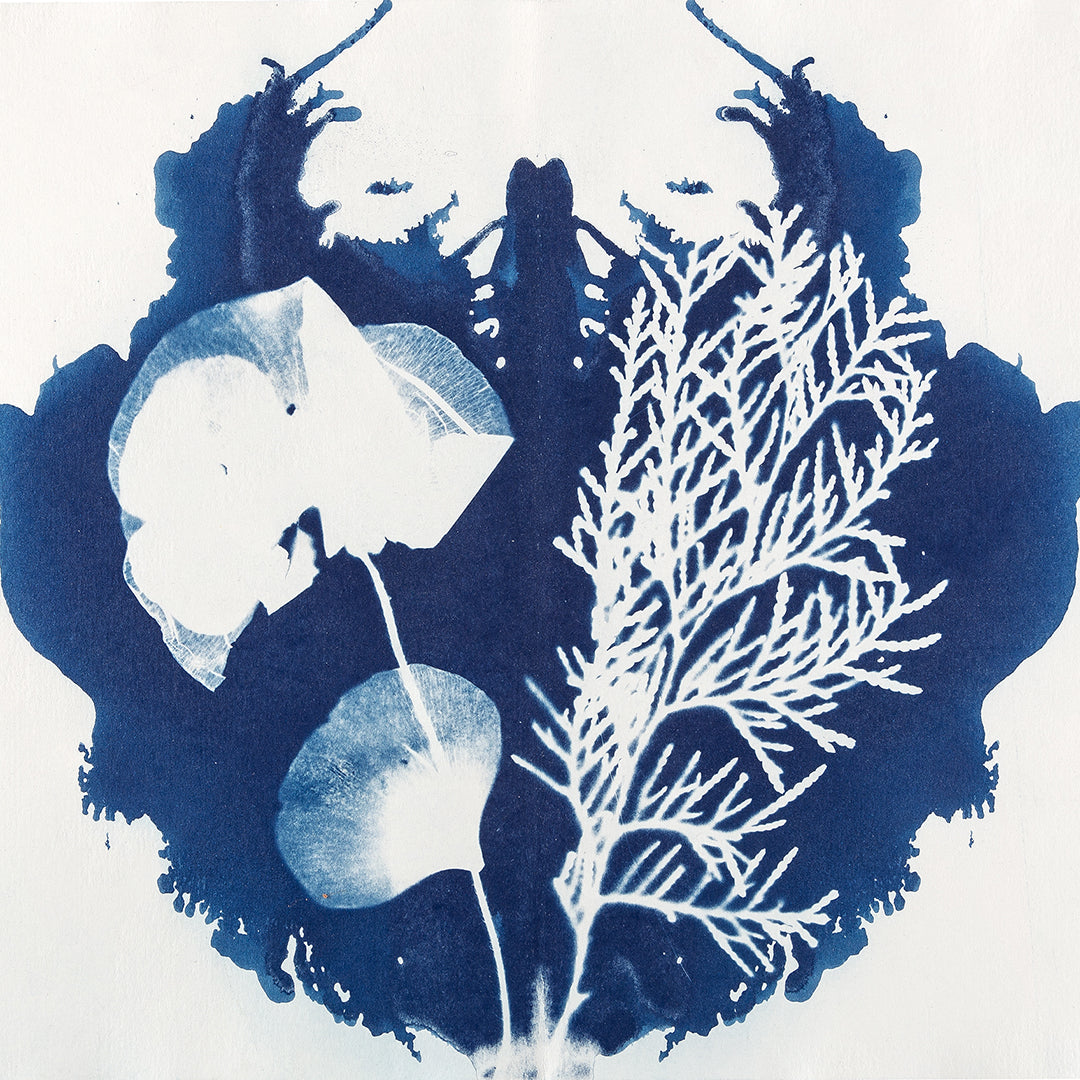

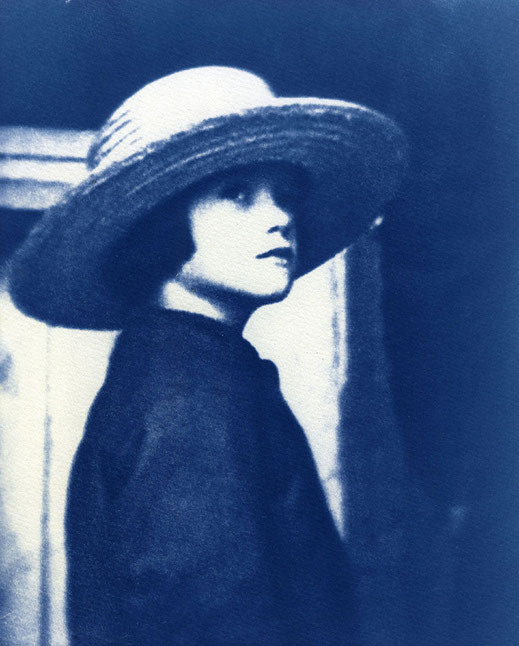
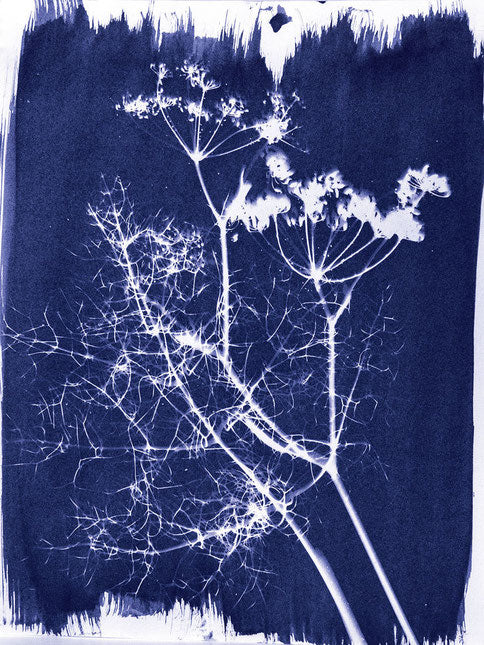

Jacquard Cyanotype Chemistry Set
Tax included. Shipping calculated at checkout
Delivery time within Germany: 1 - 3 working days
Cyanotype, invented by John Herschel in 1842, is a historic analogue photographic technique famous for its deep blue, monochromatic images.
In the 19th century, plant studies, maps, plans (blueprints), and documents were recorded in this way.
This photogram technique is still very popular today.
This is a very simple photographic process.
Development and fixation are done with tap water; a darkroom is not necessary.
With the help of this chemistry set, you can coat paper or other natural fibers such as cotton, silk, wool, but also wood or leather and then expose them to light.
capacity
Sufficient for approx. 50 A4 size papers or pieces of fabric.
This is how it works:
- The cyanotype chemistry is contained in powder form in the two plastic bottles, ensuring a very long shelf life.
- To use, simply fill the bottles with water to prepare the working solutions for batch 1 and batch 2.
A notice: Using distilled water improves the shelf life of the solutions! - By mixing the two mixtures you get the light-sensitive cyanotype working solution.
- The paper or fabric is then coated with this solution
- Cover the paper or fabric with objects, stencils, negatives, plants, etc. as desired. There are no limits to your imagination.
Depending on the template, it may be helpful to weigh it down with a piece of glass - Depending on the sun intensity, expose to UV light for 3-10 minutes, alternatively you can also use our UV exposure kit.
Where UV light hits the cyanotype sheet, a chemical reaction takes place. - Rinse the exposed sheets with cold water for at least 5 minutes until the water no longer shows any discoloration.
The exposed areas turn blue. - Within 24 hours, the cyanotype images dry and receive their deep blue image tone through oxidation
To speed up the process, you can optionally add a few drops of hydrogen peroxide to the washing water.
Durability of the solutions
- The powder chemicals in the bottles have an almost unlimited shelf life.
- The individual chemicals mixed with water in the bottles have a shelf life of about 6 months - 1 year.
Using distilled water instead of tap water improves shelf life. - The mixed emulsion (chemical solution from bottle 1 + bottle 2) is only stable for about 2-4 hours.
Therefore, it is advisable not to mix more than is needed for the current project
processing
- Coated paper is sensitive to UV light --> If possible, only cover it with objects or foils in rooms without sunlight or in the shade
- Weigh down objects on the paper/fabric with a glass pane for sharper contours
- For coating paper or fabrics with emulsion, we recommend our sponge brushes or Hake brushes.
- To create negative templates, you can also use the printing foils from Solatfast or Fotospeed and with the help of the Jacquard printing program Simply print your templates.
Downloads
Information on product safety
Attention, (VOC content = 0.0%), Ferric Ammonium Citrate =>99%, Eye Irritation, Category 2A, Skin Irritation, Category 2, Specific Target Organ Toxicity - single exposure, Category 3
Hazard warnings
H315: Causes skin irritation.
H319: Causes serious eye irritation.
H335: May cause respiratory irritation.
Safety instructions
P261: Avoid breathing dust/fume/gas/mist/vapours/spray.
P264: Wash thoroughly after handling.
P271: Use only outdoors or in a well-ventilated area.
P280: Wear protective gloves/protective clothing/eye protection/face protection.
P302+P352: IF ON SKIN: Wash with plenty of water/...
P304: IF INHALED: Remove person to fresh air and keep comfortable for breathing.
P305+P351+P338: IF IN EYES: Rinse cautiously with water for several minutes. Remove contact lenses, if present and easy to do. Continue rinsing.
P312: If you feel unwell, call a POISON CENTER/doctor/…
P321: Specific treatment (see … on this label).
P332+P313: If skin irritation occurs: Get medical advice/attention.
P337+P313: If eye irritation persists: Get medical advice/attention.
P362: Take off contaminated clothing and wash before reuse.
P403+P233: Store in a well-ventilated place. Keep container tightly closed.
P405: Keep locked up.
P501: Dispose of contents/container in accordance with local/regional/national/international regulations.
Manufacturer:
Rupert, Gibbon & Spider, Inc.
Manufacturers of Jacquard Products
PO Box 425
Healdsburg, CA 95448
service@jacquardproducts.com
Responsible person:
ART SELECT GmbH & Co. KG
Schützenstraße 22
21407 Deutsch Evern
Email: info@artselect.de
 |
Choose options







Tax included. Shipping calculated at checkout
Cyanotype, invented by John Herschel in 1842, is a historic analogue photographic technique famous for its deep blue, monochromatic images.
In the 19th century, plant studies, maps, plans (blueprints), and documents were recorded in this way.
This photogram technique is still very popular today.
This is a very simple photographic process.
Development and fixation are done with tap water; a darkroom is not necessary.
With the help of this chemistry set, you can coat paper or other natural fibers such as cotton, silk, wool, but also wood or leather and then expose them to light.
capacity
Sufficient for approx. 50 A4 size papers or pieces of fabric.
This is how it works:
- The cyanotype chemistry is contained in powder form in the two plastic bottles, ensuring a very long shelf life.
- To use, simply fill the bottles with water to prepare the working solutions for batch 1 and batch 2.
A notice: Using distilled water improves the shelf life of the solutions! - By mixing the two mixtures you get the light-sensitive cyanotype working solution.
- The paper or fabric is then coated with this solution
- Cover the paper or fabric with objects, stencils, negatives, plants, etc. as desired. There are no limits to your imagination.
Depending on the template, it may be helpful to weigh it down with a piece of glass - Depending on the sun intensity, expose to UV light for 3-10 minutes, alternatively you can also use our UV exposure kit.
Where UV light hits the cyanotype sheet, a chemical reaction takes place. - Rinse the exposed sheets with cold water for at least 5 minutes until the water no longer shows any discoloration.
The exposed areas turn blue. - Within 24 hours, the cyanotype images dry and receive their deep blue image tone through oxidation
To speed up the process, you can optionally add a few drops of hydrogen peroxide to the washing water.
Durability of the solutions
- The powder chemicals in the bottles have an almost unlimited shelf life.
- The individual chemicals mixed with water in the bottles have a shelf life of about 6 months - 1 year.
Using distilled water instead of tap water improves shelf life. - The mixed emulsion (chemical solution from bottle 1 + bottle 2) is only stable for about 2-4 hours.
Therefore, it is advisable not to mix more than is needed for the current project
processing
- Coated paper is sensitive to UV light --> If possible, only cover it with objects or foils in rooms without sunlight or in the shade
- Weigh down objects on the paper/fabric with a glass pane for sharper contours
- For coating paper or fabrics with emulsion, we recommend our sponge brushes or Hake brushes.
- To create negative templates, you can also use the printing foils from Solatfast or Fotospeed and with the help of the Jacquard printing program Simply print your templates.
Downloads
Information on product safety
Attention, (VOC content = 0.0%), Ferric Ammonium Citrate =>99%, Eye Irritation, Category 2A, Skin Irritation, Category 2, Specific Target Organ Toxicity - single exposure, Category 3
Hazard warnings
H315: Causes skin irritation.
H319: Causes serious eye irritation.
H335: May cause respiratory irritation.
Safety instructions
P261: Avoid breathing dust/fume/gas/mist/vapours/spray.
P264: Wash thoroughly after handling.
P271: Use only outdoors or in a well-ventilated area.
P280: Wear protective gloves/protective clothing/eye protection/face protection.
P302+P352: IF ON SKIN: Wash with plenty of water/...
P304: IF INHALED: Remove person to fresh air and keep comfortable for breathing.
P305+P351+P338: IF IN EYES: Rinse cautiously with water for several minutes. Remove contact lenses, if present and easy to do. Continue rinsing.
P312: If you feel unwell, call a POISON CENTER/doctor/…
P321: Specific treatment (see … on this label).
P332+P313: If skin irritation occurs: Get medical advice/attention.
P337+P313: If eye irritation persists: Get medical advice/attention.
P362: Take off contaminated clothing and wash before reuse.
P403+P233: Store in a well-ventilated place. Keep container tightly closed.
P405: Keep locked up.
P501: Dispose of contents/container in accordance with local/regional/national/international regulations.
Manufacturer:
Rupert, Gibbon & Spider, Inc.
Manufacturers of Jacquard Products
PO Box 425
Healdsburg, CA 95448
service@jacquardproducts.com
Responsible person:
ART SELECT GmbH & Co. KG
Schützenstraße 22
21407 Deutsch Evern
Email: info@artselect.de
 |
If you have any questions or concerns, please do not hesitate to contact us.
Best shipping
We ship your goods as quickly and safely as possible.
We process your payment information and other data securely.
